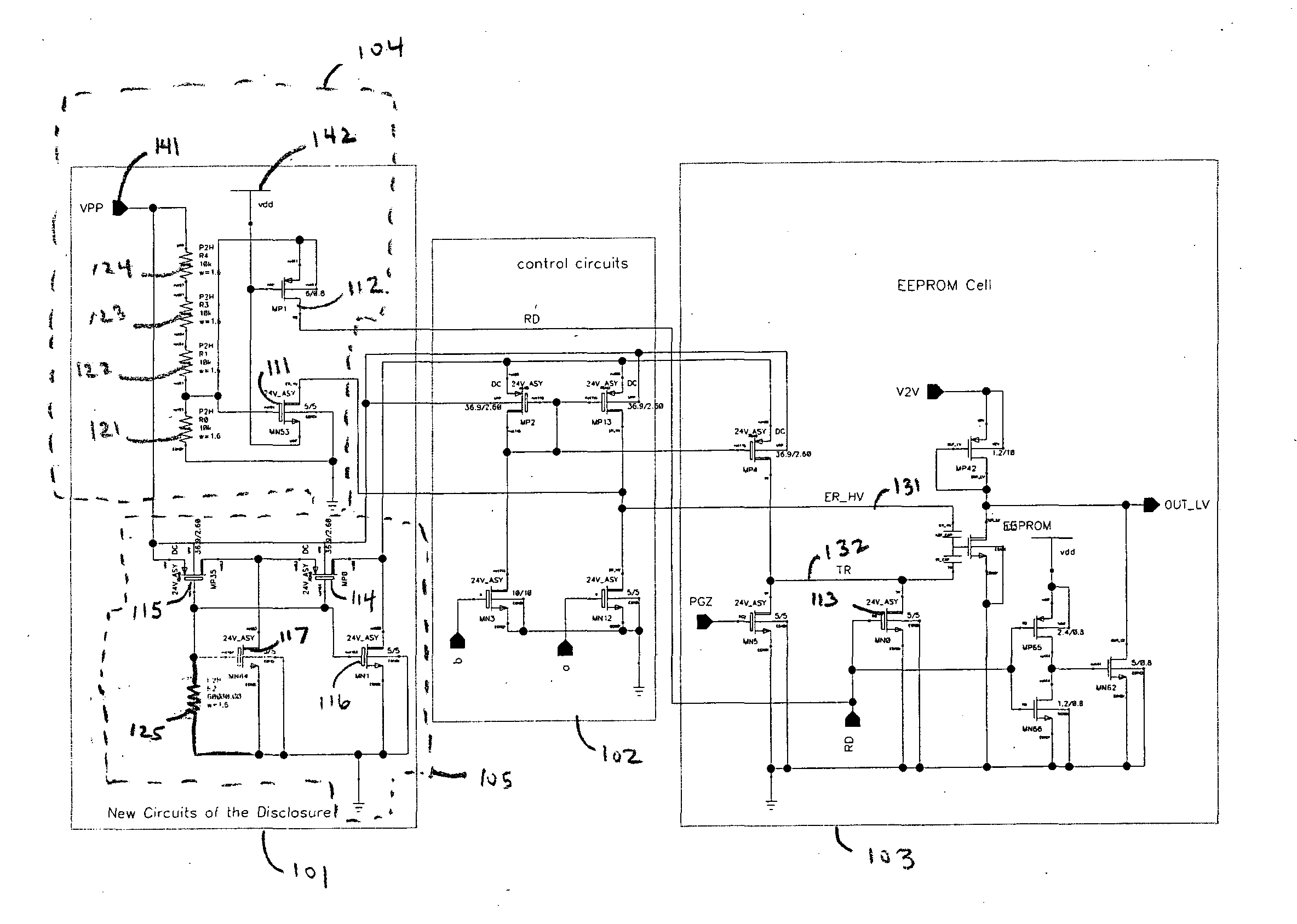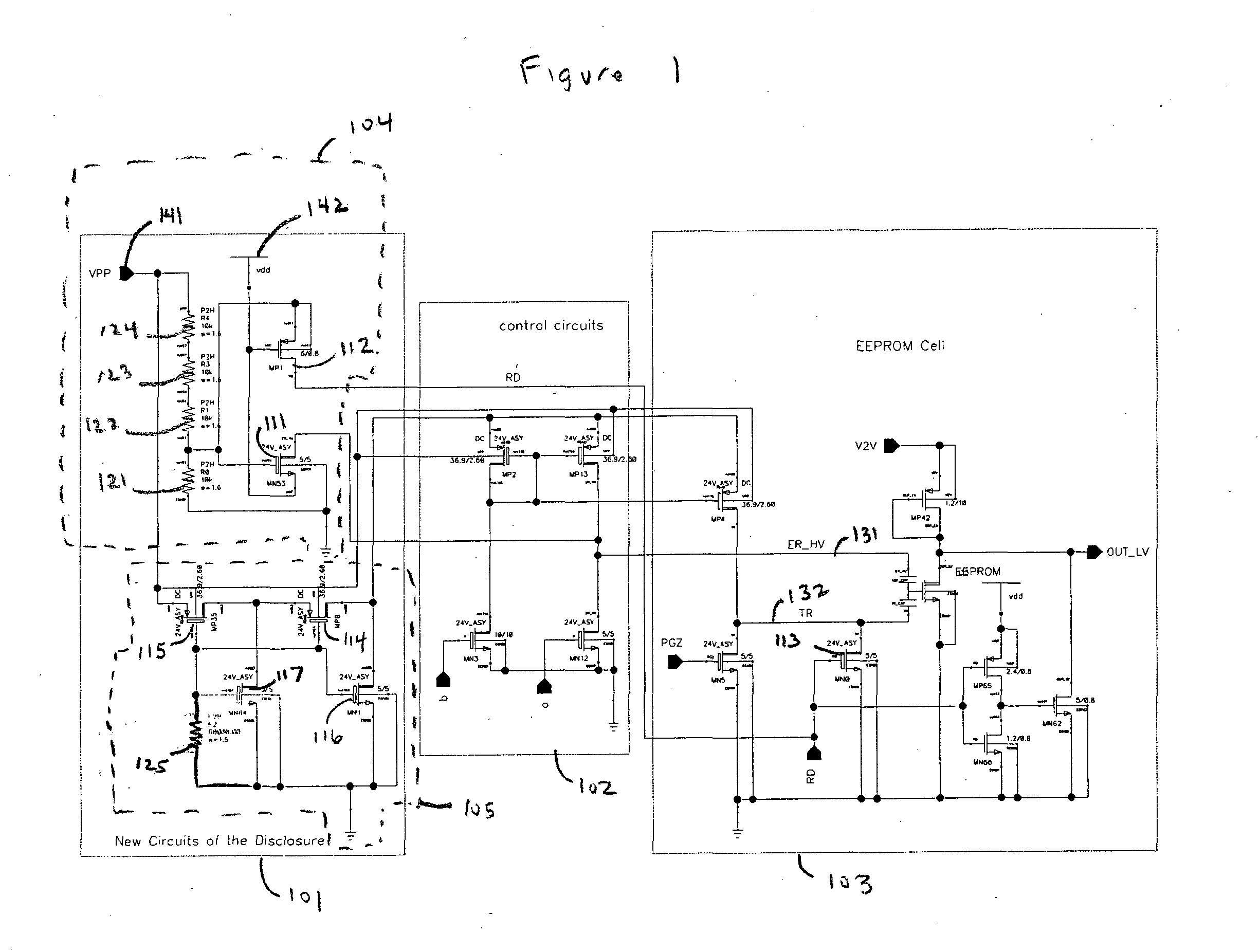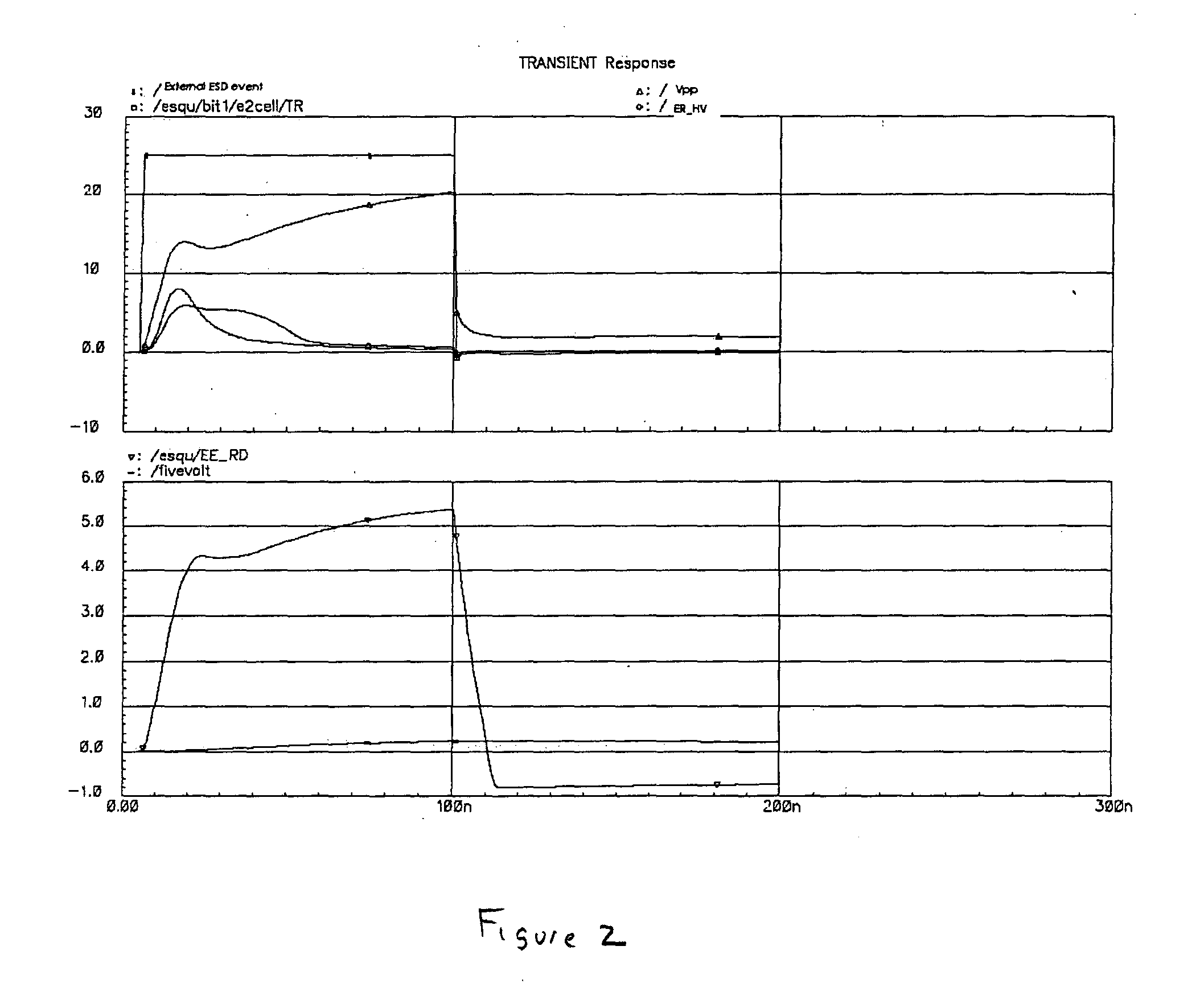Circuit and method to protect EEPROM data during ESD events
- Summary
- Abstract
- Description
- Claims
- Application Information
AI Technical Summary
Benefits of technology
Problems solved by technology
Method used
Image
Examples
Embodiment Construction
[0009] The numerous innovative teachings of the present invention will be described with particular reference to an exemplary embodiment. However, it should be understood that the exemplary embodiment is only one example of the many advantageous embodiments and innovative teachings herein. In general, statements made in the specification of the application do not necessarily delimit any of the various claimed inventions. Moreover, some statements may apply to some inventive features, but not to others. Detailed descriptions of known functions and constructions unnecessarily obscuring the subject matter of the present invention have been omitted for clarity.
[0010] A small number of EEPROM cells, typically less than one hundred bits, is used on servo motor controller ICs, including CMOS monolithic integrated circuits, as a cost effective means of fine tuning the performance of the silicon and reducing the effect of manufacturing variations. The bits are programmed by applying a signa...
PUM
 Login to View More
Login to View More Abstract
Description
Claims
Application Information
 Login to View More
Login to View More - R&D
- Intellectual Property
- Life Sciences
- Materials
- Tech Scout
- Unparalleled Data Quality
- Higher Quality Content
- 60% Fewer Hallucinations
Browse by: Latest US Patents, China's latest patents, Technical Efficacy Thesaurus, Application Domain, Technology Topic, Popular Technical Reports.
© 2025 PatSnap. All rights reserved.Legal|Privacy policy|Modern Slavery Act Transparency Statement|Sitemap|About US| Contact US: help@patsnap.com



